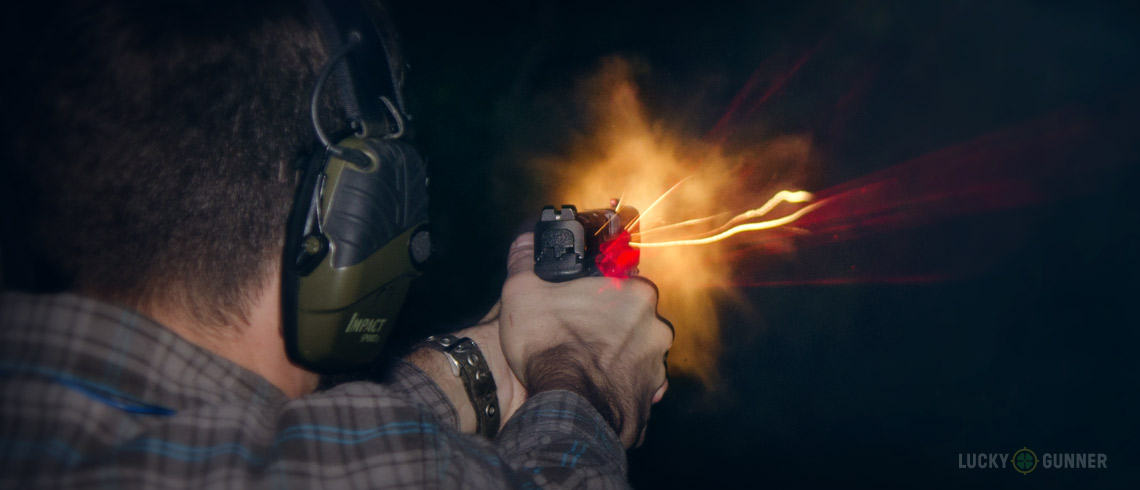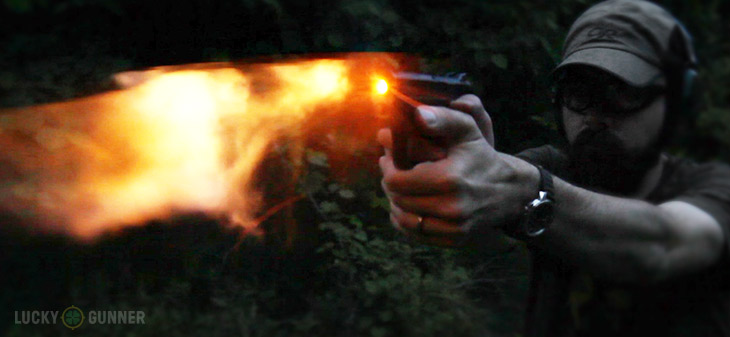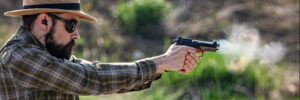When the topic of muzzle flash comes up, we’re usually talking about carbines. The high volume of burning gases from a rifle cartridge can cause some serious fireworks out of the end of a 16-inch rifle barrel. But handguns have muzzle flash, too, and if you’re trusting your life to a short barreled carry gun, it can be a serious nuisance.
In firearms used for self-defense, muzzle flash presents two problems. First, it can reveal your position to an attacker. But unless you’re getting into extended firefights in the woods at night, this is shouldn’t be a major concern for the average citizen. The second and more serious problem is that muzzle flash can really mess up your low-light vision.
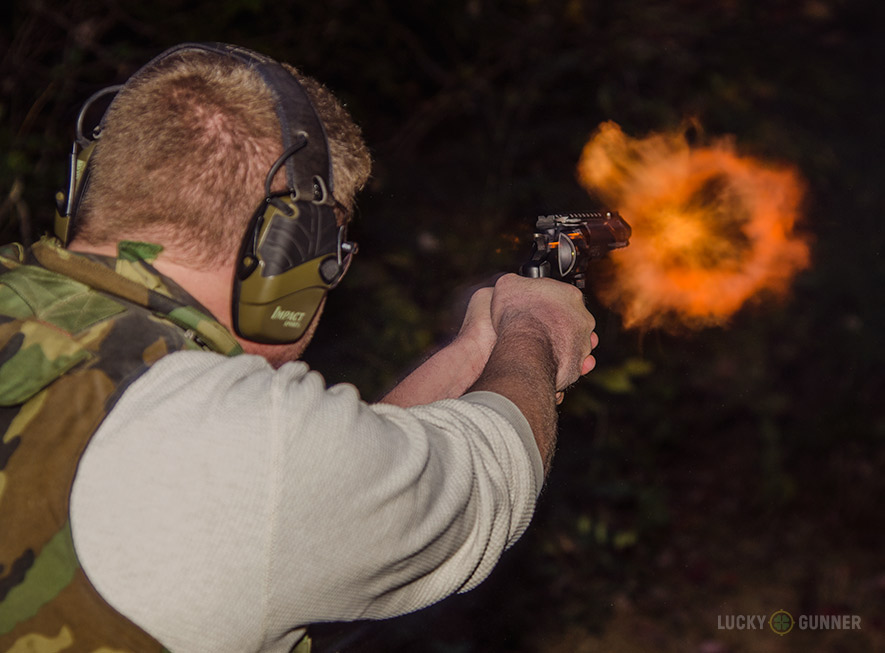
Think back to the last time you caught an eyeball full of a camera flash in a dark room and how you couldn’t see anything but the back side of your scorched retina for the next 10 minutes. Now imagine that happening to your vision after you’ve fired a couple of shots at an armed assailant in a dimly lit parking deck (not that you’d ever be so dense as to leave your car in a dimly lit parking deck). Muzzle flash is not usually as bright as the average camera flash, but it can still do a number on your ability to see what’s happened to the bad guy after firing a shot in poor lighting. Since the majority of defensive gun uses occur in low light, it’s an issue worth considering.
Demonstration: Standard vs. Low Flash Ammo
What Causes Muzzle Flash?
When a round of ammunition goes off, the primer ignites the propellant, and the propellant burns, creating rapidly expanding gasses that push the bullet down the barrel. After the bullet has exited the barrel, it’s followed by those gases, and sometimes you can still see the propellant burning for an instant before it is all exhausted. That quick glimpse of flame from the end of the barrel is what we call muzzle flash.
The magnitude of the visible flash is directly related to the amount of propellant that’s still burning after the bullet has made its way out. Shorter barrels leave less time for the powder to completely burn while the bullet is still inside, so you’ll usually see more flash with those guns than with longer barrels firing the same load. The ammo itself also makes a big difference, depending on both the caliber and the specific load chosen. If there’s a lot of powder in the cartridge case in proportion to the size of the bullet, as in the case of most magnum handgun loads, the flash will be dramatic. Self-defense ammo is usually loaded “hotter” than practice ammo, with a higher volume of propellant, especially in loads marked as +P.
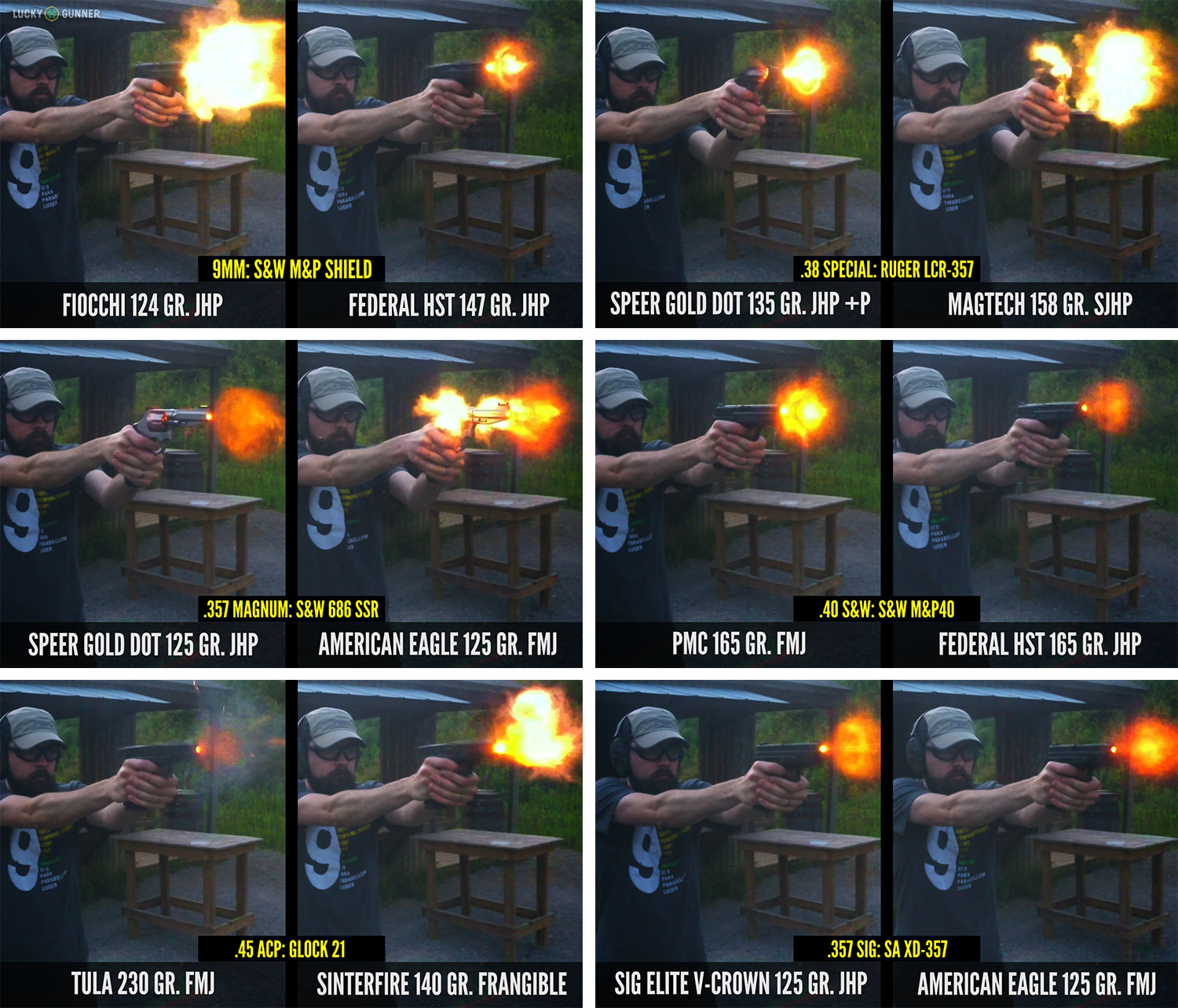
For rifles, flash hiders (also called flash suppressors) help subdue the brightness of the muzzle flash. These devices attach to the muzzle and disperse the gases in a way that makes the muzzle flash less visible. Handguns don’t typically have flash hiders, so a different solution is needed. That’s where low flash gun powder comes in. These powders are made with additives or “flash suppressant” that slightly changes the characteristics of the chemical reaction that occurs when the powder is ignited. The result is a muzzle flash that usually has a dull orange hue, rather than a bright white or yellow flash.
The difference between a standard and low flash powder is most easily appreciated when firing a high pressure cartridge out of a short barrel. In the images and video above, you can see this principle at work most clearly with the 9mm and .38 special loads that were fired from short barreled handguns.
A lower flash signature can also be achieved by using under-powered ammo, such as the Tula .45 ACP load shown above. Low-flash powder is mostly reserved for premium self-defense ammo when it’s important to push out the bullet at high velocity but also prevent the shooter from being blinded by flash.
Customers frequently ask us why some hollow-point self-defense ammo is priced higher than others. The cost difference of the premium loads is primarily due to superior bullet design that penetrates and expands more reliably than older designs, but the use of low flash powder is a secondary benefit of these loads that is often overlooked.
Try This At Home
It’s hard to convey with videos or photos just how much of a difference the muzzle flash can make when you’re shooting in low light. The only way to really know if your self-defense loads are too bright is to simply try them yourself. Head out to the range when it’s getting dark out (it doesn’t have to be pitch black. Dusk is fine), or maybe go to an indoor range that’s not very well lit, and stick around for half an hour so your eyes get adjusted to the dark. Then fire off a few rounds and see if your vision is affected. Try a few rapid fire drills in broad daylight and compare them with your results in low light. If you don’t like what you see (or can’t see), then it might be time to pick a new self-defense load. Be sure to come back here and let us know in the comments what you find.
